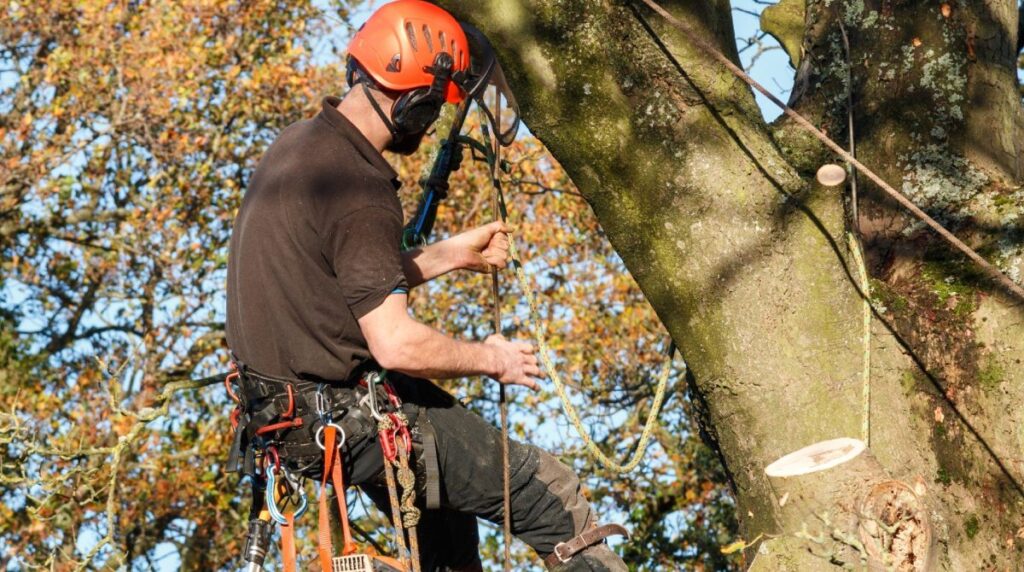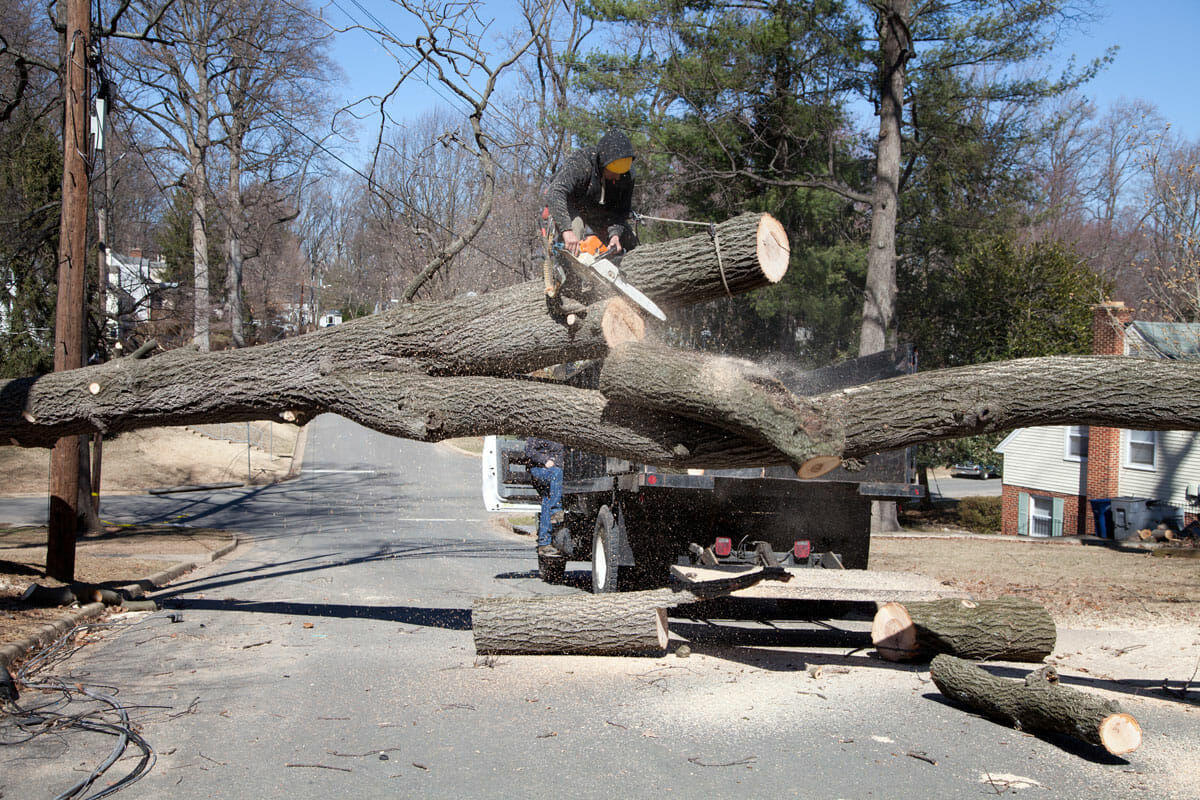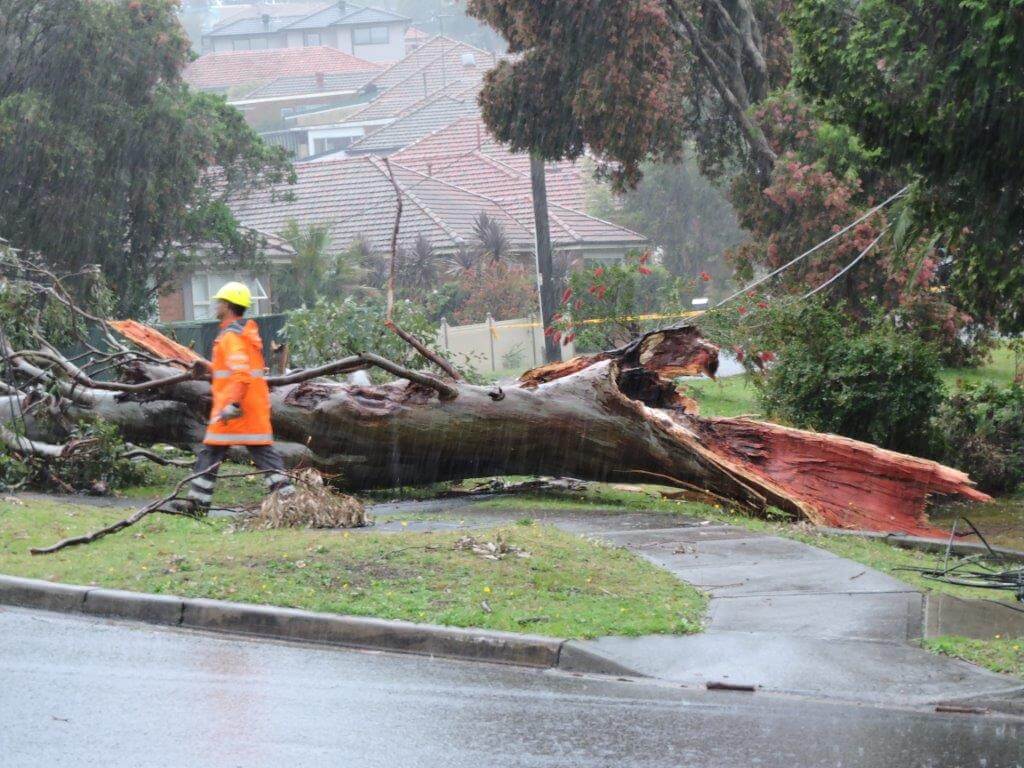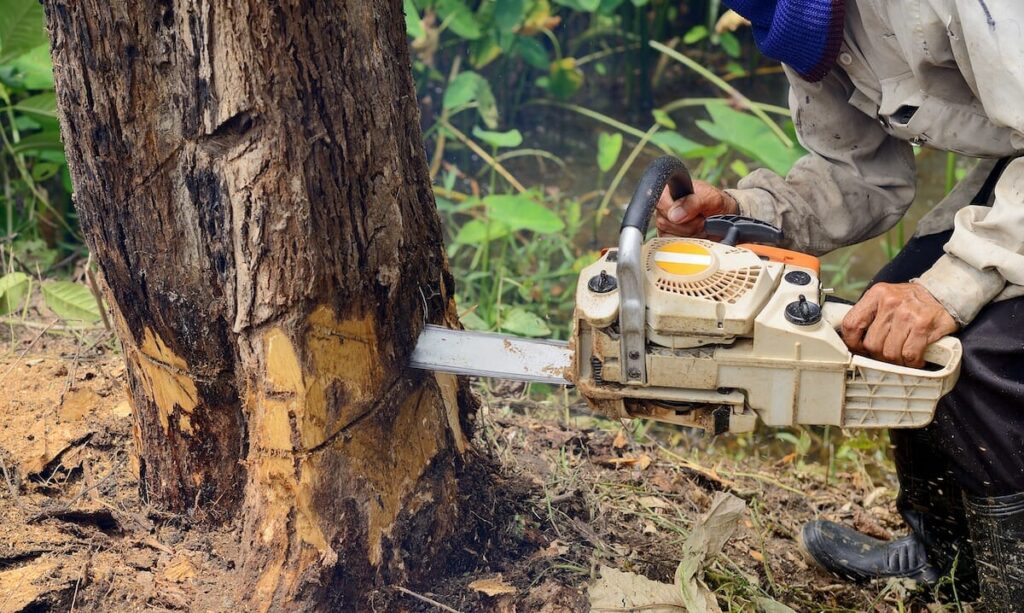Palm trees are a beautiful addition to any landscape, providing shade and a tropical feel. However, there may come a time when you need to remove a palm tree for various reasons. Whether it’s because the tree is diseased, damaged, or simply outgrown its space, it’s important to understand the various techniques and considerations involved in palm tree removal.
Understanding Palm Tree Anatomy
Before diving into the palm tree removal process, it’s crucial to have a basic understanding of palm tree anatomy. This knowledge will help you identify key parts of the tree and make informed decisions throughout the removal process.
Palms are unique in the plant world, with their distinctive look and growth habits. They belong to the family Arecaceae and are known for their tall, slender trunks topped with a canopy of large, fan-shaped or feather-like leaves. Understanding the anatomy of a palm tree will give you insight into its growth patterns, nutritional needs, and overall health. Learn more about factors influencing the cost of tree removal.
The Importance of Knowing Your Palm Tree
Every palm tree species has unique characteristics that influence its growth and care requirements. Understanding the specific type of palm tree you’re dealing with is essential for effective removal. It allows you to tailor your approach based on its size, root structure, and overall health.
Some common palm tree species include the Coconut Palm, Date Palm, and Queen Palm, each with its own distinct features and maintenance needs. By identifying the species of palm tree in question, you can better anticipate how it will respond to pruning or removal, ensuring the process is carried out safely and effectively.
Key Parts of a Palm Tree
A palm tree consists of several key parts, each serving a specific purpose. These parts include the trunk, fronds, crownshaft, root system, and inflorescence. When removing a palm tree, it’s important to consider how these parts interact and how their removal will impact the tree’s stability and surrounding environment.
The trunk of a palm tree is its defining feature, providing structural support and transporting nutrients from the roots to the leaves. The fronds, or leaves, play a crucial role in photosynthesis and transpiration, helping the tree produce energy and regulate water loss. The crownshaft is the area where new leaves emerge, protecting the delicate growing tip of the tree. Understanding these key parts will guide you in making informed decisions when caring for or removing a palm tree.
Preparing for Palm Tree Removal
Once you’ve familiarized yourself with the palm tree’s anatomy, it’s time to start preparing for its removal. This stage involves ensuring your safety and acquiring the necessary tools and equipment.
Before diving into the removal process, it’s essential to understand the environmental impact of removing a palm tree. These trees play a significant role in the ecosystem, providing habitats for various wildlife and contributing to the overall biodiversity of the area. Consider planting new trees or shrubs to offset the loss of the palm tree and maintain the ecological balance of your surroundings.
Furthermore, consulting with a professional arborist or tree removal service can provide valuable insights into the best practices for palm tree removal. Their expertise can help you navigate any legal regulations or permits required for tree removal in your area, ensuring a smooth and compliant process.

Safety Measures to Consider
Palm tree removal can be a hazardous task, especially if you’re not adequately prepared. Always wear appropriate safety gear, such as gloves, goggles, and a hard hat, to protect yourself from falling debris and sharp objects.
Additionally, assess the area surrounding the tree. Clear any obstacles, secure loose objects, and exercise caution to prevent accidents during the removal process.
Necessary Tools and Equipment
Having the right tools and equipment is crucial for a successful palm tree removal. Some essential tools include a chainsaw, loppers, hand saw, pruning shears, and sturdy ropes or straps for securing branches.
Consider renting or purchasing specialized equipment, like a tree lift or crane, if the palm tree is exceptionally large or challenging to access. These tools can simplify the removal process and ensure your safety.
Different Palm Tree Removal Techniques
Now that you’re fully prepared, it’s time to explore the various techniques for removing a palm tree. The method you choose will depend on factors such as the tree’s size, location, and your level of expertise.
Removing a palm tree requires careful planning and execution to ensure safety and success. Let’s dive deeper into the two most common techniques: cutting down the palm tree and digging it out.
Cutting Down the Palm Tree
The most common technique for removing a palm tree is cutting it down. This method involves carefully bringing down the tree in sections, starting from the top and working your way down.
Before you start, make sure you have the necessary safety equipment, such as a hard hat, safety goggles, and sturdy work gloves. It’s also important to have someone assist you during this process to ensure everything goes smoothly.
Begin by making strategic cuts at specific angles to control the direction of the tree’s fall. Start with smaller branches and work your way up to the larger ones. Once you’ve removed all the branches, carefully cut the trunk into manageable sections. Lower each section to the ground using ropes or a pulley system.
Remember to always have a clear escape route in case the tree doesn’t fall as expected. Safety should be your top priority throughout the entire process.
Digging Out the Palm Tree
For smaller palm trees, digging out the tree is an effective removal technique. This method involves excavating the entire root ball, ensuring you remove all the roots to prevent regrowth.
Before you begin, assess the size of the root ball and determine the appropriate tools for the job. A sharp shovel or a digging tool will be necessary to carefully dig around the tree. Start from the outer edge and gradually work your way inward, being cautious not to damage any surrounding plants or structures.
Once you’ve exposed the root ball, gently pry it out using a combination of digging and cutting tools. It may take some effort, but with patience, you’ll be able to remove the entire root system. Once the root ball is free, carefully lift it out of the hole and dispose of it properly.
Keep in mind that digging out a palm tree can be physically demanding, so take breaks as needed and stay hydrated throughout the process.
Using Chemicals for Palm Tree Removal
Chemical removal is an alternative method that involves applying herbicides to the palm tree. This technique is most suitable for situations where other removal methods are impractical or not permitted.
Before considering chemical removal, consult with a professional arborist or horticulturist to determine the appropriate herbicide and application method for your specific palm tree. They will consider factors such as the tree’s species, size, and location to ensure the most effective and environmentally friendly approach.
When using herbicides, always follow the instructions and safety precautions provided by the manufacturer. Apply the herbicide directly to the tree’s trunk or foliage, ensuring thorough coverage. Be patient, as it may take several weeks for the herbicide to take effect and for the palm tree to die completely.
Remember that chemical removal should only be used as a last resort and in accordance with local regulations. It’s essential to prioritize the health and safety of both the palm tree and the surrounding environment.
Disposing of the Palm Tree Post-Removal
After successfully removing the palm tree, you’ll need to consider how to dispose of the tree and its remains. Proper disposal ensures minimal environmental impact and compliance with local regulations.
Once the palm tree has been removed, it’s essential to assess the best way to handle its disposal. Proper disposal methods not only help in maintaining the aesthetics of your property but also contribute to environmental sustainability.
Recycling the Palm Tree
Palm trees can be recycled or repurposed in various ways, depending on their condition. Consider contacting local recycling centers, gardeners, or craftspeople who may be interested in repurposing the wood, leaves, or other parts of the tree.
Repurposing palm tree parts can be a creative way to give them a new lease on life. The sturdy wood from the trunk can be used for various woodworking projects, while the leaves can be transformed into decorative or functional items by skilled artisans.
Additionally, some communities offer curbside pickup services for large tree debris, making it easy to dispose of palm tree remains responsibly.
Legal Aspects of Palm Tree Disposal
Before disposing of the palm tree, research and comply with any local regulations concerning tree removal and disposal. Some areas may require permits or have specific guidelines for handling tree debris.
Understanding the legal aspects of palm tree disposal is crucial to avoid any potential issues. By adhering to the regulations set by your local authorities, you not only ensure a smooth disposal process but also contribute to maintaining the ecological balance of your surroundings.
Ensure you follow all applicable laws to avoid penalties or fines and contribute to preserving your community’s environmental balance.

Hiring Professional Palm Tree Removal Services
While DIY palm tree removal is an option, some situations may call for professional assistance. It’s essential to know when to consider hiring experts to ensure a safe and effective removal process.
Removing a palm tree can be a complex task, especially when faced with challenging circumstances. One such circumstance is when the palm tree is exceptionally large. These towering giants can reach heights of up to 100 feet, making their removal a daunting task for even the most experienced DIY enthusiasts. Hiring professional palm tree removal services in such cases ensures that the job is handled by experts who have the necessary equipment and knowledge to safely bring down these massive trees.
Another situation that calls for professional help is when the palm tree is located near power lines or structures. The proximity to power lines adds an extra layer of complexity to the removal process, as it requires careful planning and coordination with utility companies to ensure everyone’s safety. Professional palm tree removal services have the experience and expertise to navigate these challenges, minimizing the risk of accidents and damage to property.
When to Consider Professional Help
If the palm tree poses a significant risk, it’s best to leave the removal to professionals. Some palm trees may have structural issues, such as decay or disease, which can weaken their integrity and make them prone to falling. In such cases, attempting a DIY removal can be extremely dangerous. Professional palm tree removal services can assess the tree’s condition and determine the best course of action to eliminate the risk safely.
Consulting with local arborists or tree care companies is crucial when considering professional help. They can provide valuable insights and advice based on their expertise. Additionally, obtaining quotes from multiple providers allows you to compare prices and services, ensuring that you make an informed decision that suits your specific removal needs.
Choosing the Right Palm Tree Removal Service
When selecting a professional palm tree removal service, several factors should be taken into consideration. First and foremost, ensure that the service provider has the necessary expertise in palm tree removal. Palm trees have unique characteristics and require specialized knowledge for safe and efficient removal.
Reputation is another crucial factor to consider. Look for reviews and testimonials from previous customers to gauge the quality of service provided by the company. A reputable palm tree removal service will have a track record of satisfied customers and positive feedback.
Certifications and insurance coverage are also important considerations. A certified palm tree removal service demonstrates that their staff has undergone proper training and adheres to industry standards. Insurance coverage provides you with peace of mind, knowing that any potential damages or accidents during the removal process will be covered.
Requesting references from the palm tree removal service is a good practice. Speaking with previous clients allows you to gain insights into the company’s professionalism, reliability, and the overall satisfaction of their customers.
Remember that hiring professionals not only saves you time and effort but also guarantees a smoother process and minimizes damage to your property and surrounding areas. By entrusting the task to experts, you can be confident that the palm tree removal will be carried out safely and efficiently, leaving you with a well-manicured and safe outdoor space.
By understanding palm tree anatomy, preparing adequately, and selecting the appropriate removal technique, you can safely and efficiently remove a palm tree whenever necessary. Whether you choose to tackle the task yourself or hire professionals, always prioritize safety and follow the appropriate guidelines and regulations. With proper planning and execution, palm tree removal can be a straightforward process that allows you to maintain a well-manicured and safe outdoor space.
Other resources to learn about:
Steps to Finding the Perfect Buyers Agent for Your Gold Coast
Everything You Need to Know About a Back to Base Alarm Sydney Solution




